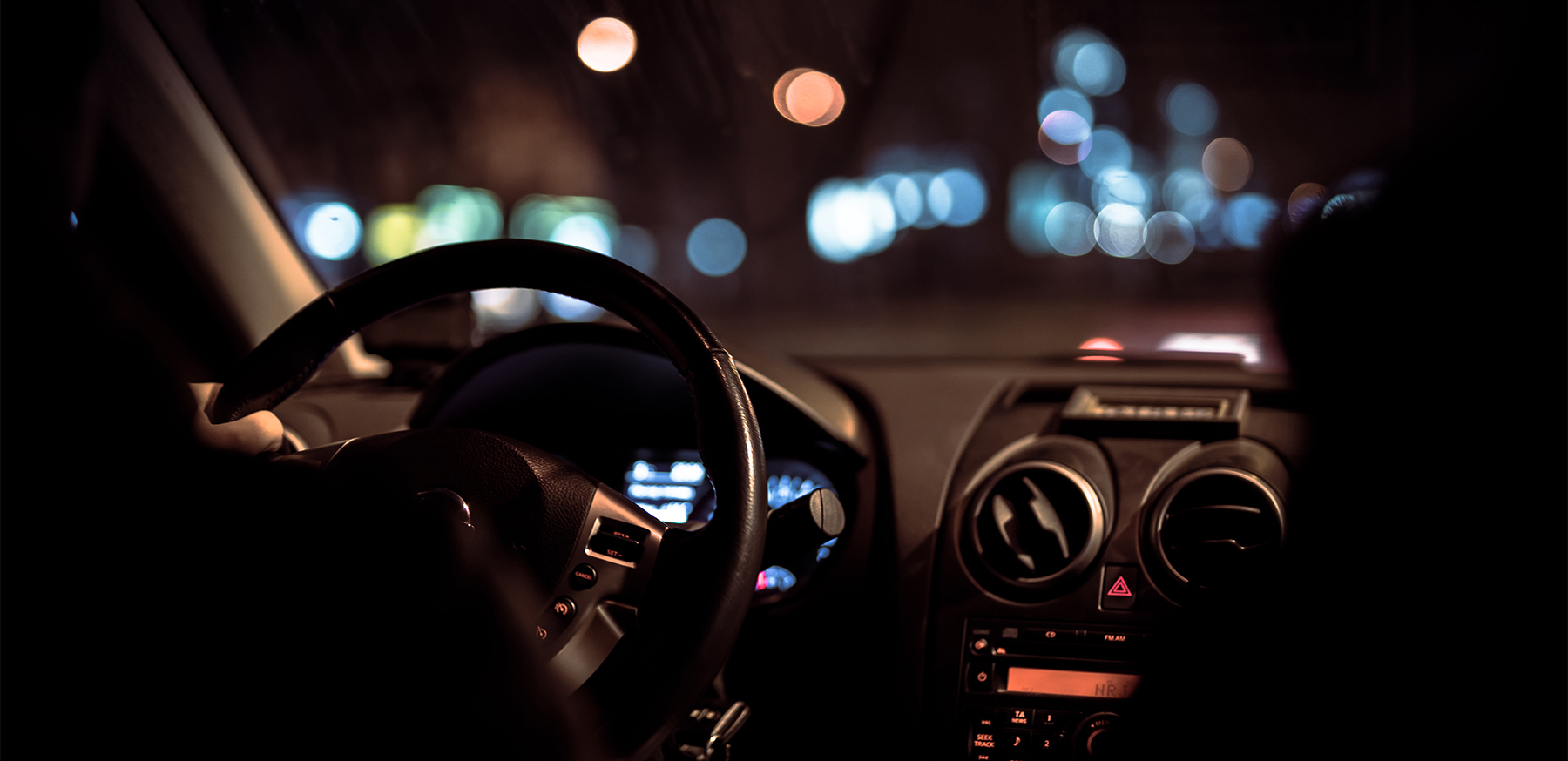Contact: NSF Communications
540-850-7827
skohn@thensf.org
Sleep first. Drive alert. Drowsy Driving Prevention Week® 2021
WASHINGTON, DC, November 5, 2021 — The National Sleep Foundation (NSF) announces November 7- 14 as Drowsy Driving Prevention Week® for 2021.
Drowsy Driving Prevention Week® is a time to reflect on how dangerously common—but preventable—drowsy driving truly is. Drowsy driving can be avoided. The most important preventative measure to stopping drowsy driving is a well-rested driver.
Drowsy driving is responsible for more than 6,400 U.S. deaths annually and is a public health concern. Younger drivers aged 16-25 are at greatest risk of falling asleep at the wheel, but almost everyone can relate to a time when they have nodded off behind the wheel. The National Highway Traffic Safety Administration estimates that 100,000 police reported crashes each year are caused primarily by drowsy driving and that such crashes result in more than 71,000 injuries and $12.5 million in monetary losses. Most importantly, drowsy driving is preventable. NSF’s annual campaign goal is to reduce the number of drivers who drive while sleep deprived.
“Drowsy driving is a public health issue that can affect everyone. NSF encourages all drivers to prioritize sleep and drive only when alert and refreshed,” said NSF Chair, Lauren Hale, PhD.
The NSF Drowsy Driving Consensus Working Group’s 2016 report published in Sleep Health concluded that sleep deprivation renders motorists unfit to drive a motor vehicle. 1 Specifically, healthy drivers who have slept for two hours or less in the preceding 24 hours are not fit to operate a motor vehicle. NSF experts further agreed that most healthy drivers would likely be impaired with only 3 to 5 hours of sleep during the prior 24 hours.
- Three key steps before driving can help prevent falling asleep behind the wheel:
get the recommended amount of sleep the night before your trip (7-9 hours on average), - plan long trips with a companion, and
- schedule regular stops every 100 miles or 2 hours.
Join NSF to help prevent drowsy driving. Access educational resources today on theNSF.org and share the campaign’s message on social media using the hashtag #SleepFirst.
NSF is proud to recognize Jack Cooper, Schneider National, and Waymo as Drowsy Driving Prevention Week sponsors and demonstrating their commitment to sleep health and road safety. We’re also pleased that the Drowsy Driving Prevention Project and National Safety Council are joining NSF to help educate the public about the dangers of drowsy driving.
References
1. National Sleep Foundation. Drowsy Driving Consensus Workgroup. Nov. 2015. Czeisler, CA, Wickwire, EM, Barger LK, et al. Sleep-deprived motor vehicle operators are unfit to drive: a multidisciplinary expert consensus statement on drowsy driving. Sleep Health. 2016;2(2):94-99.
About the National Sleep Foundation
The National Sleep Foundation (NSF) is a 501(c)3 nonprofit corporation dedicated to improving health and well-being through sleep education and advocacy. Founded in 1990, the NSF is committed to advancing excellence in sleep health theory, research and practice.
theNSF.org │SleepHealthJournal.org
SleepFirst™: National Sleep Foundation’s Drowsy Driving Safety Campaign
Teenagers are at High Risk for Drowsy Driving Incidents
Any driver can become fatigued behind the wheel, but males under the age of 26 are in the highest risk group for driving drowsy. Drowsy driving can happen at any time, but it is most likely to occur between midnight and 6 am. It is important to inform yourself with the statistics, scenarios and the risk factors for drowsy driving.
The National Sleep Foundation advises that teens need between 8 and 10 hours of sleep per night. Less sleep can be a contributing factor to Drowsy Driving.

Is Your Teen Driving Drowsy?
Perhaps it is 6 am and your child is getting ready to get in the car and head to school. They have been up until 1am studying for their history exam.
Or maybe it’s midnight and your high school senior has gone out for pizza after the football game. They text you to let you know that they are on their way home.
You probably remind them to put their phone away while driving. You probably make sure that they are not driving under the influence. Make sure you also ask them if they are alert enough to drive. While parents are apt to concern themselves with making sure their teenager does not drive under the influence or drive distracted, it is equally important to make sure that they are alert enough to get behind the wheel.
Drowsy Driving vs. Driving Under the Influence
Drunk driving and drowsy driving are both extremely dangerous and responsible for a high number of vehicle crashes and fatalities each year. The consensus across traffic safety, and scientific and public health communities is that it is difficult to quantify the true number of car crashes caused by drowsy driving. A conservative estimate is 6,400 fatalities a year from drowsy driving.
It is easier to quantify the number of car crashes caused by drunk driving than by drowsy driving. It is considered alcohol-impaired driving by the National Highway Traffic Safety Administration (NHTSA) when one or more drivers has a Blood Alcohol Content (BAC) of .08 or higher. NHTSA reported drunk driving was responsible for 9,236 fatal crashes in 2019.
A clinical trial found that being awake for 17- 19 hours is comparable to having a blood alcohol content of 0.05%. Observations included decreased reaction time and hand-eye coordination. After longer periods without sleep, performance reached levels equivalent to a BAC of 0.1%.
Don’t Drive Drowsy or Drunk: Stay Safe While Driving
You can prevent drunk driving simply by not driving after consuming alcohol. Use a designated driver or a ride service. The best way to prevent drowsy driving is to get enough sleep. You can also use a ride service or ask someone else to drive if you do not feel alert.
If you do notice signs of drowsiness, pull over and take a 20 minute nap. Signs of drowsy driving are similar to signs of drunk driving and include:
- Heavy eyelids or frequent blinking
- Frequent yawning
- Drifting back and forth between lanes or hitting a rumble strip
- Missing signs or exits due to daydreaming
- Restlessness, irritability, and aggressiveness including tailgating
Avoiding both drunk driving and drowsy driving keeps everyone on the road safer and can reduce car crashes and fatalities.
SleepFirst™: National Sleep Foundation’s Drowsy Driving Safety Campaign
What Exactly is Microsleep?
You may be unfamiliar with the term, but microsleep is quite common and can be dangerous if it occurs while you are driving a vehicle.
Simply put, microsleep is when you fall asleep for a period of several seconds. As the name implies, microsleep occurs so quickly that people who have an episode might not even realize they have fallen asleep. Microsleep can occur at any time of day, not just at night. During an episode, you may appear to be awake, and even have your eyes open, but your brain does not process information.
Why is Microsleep Dangerous?
If you are sleep deprived, or if you have a sleep disorder, you are at higher risk for microsleep. Episodes can happen while you are driving a vehicle or operating other heavy machinery and this is when microsleep becomes precarious. Microsleep can lead to dangerous crashes, or running your car off of the road. If you are driving at a high speed, the likelihood of a severe crash increases.
It is important that you make sure that you are alert before you get behind the wheel. If you feel drowsy, do not drive. If you find yourself with wandering thoughts, drifting into other lanes, or cannot remember the last few miles you drove, pull over to the side of the road to rest or ask someone else to drive.
Preventing Microsleep
The best way to prevent microsleep is prioritizing sleep and making sure you get the right amount of sleep you need to feel refreshed and alert . The National Sleep Foundation recommends 7-9 hours a night for adults, more for teenagers.
You can also use the following techniques to better help you fall asleep at night.
- Make sure to turn off electronics one hour prior to bed—no texting!
- Set a relaxing bedtime routine, such as listening to calming music, reading a book or taking a warm bath.
- Avoid caffeine in the late afternoon and evening.
- If you are able, make sure to sleep in a cool, dark room.
For more information about drowsy driving, visit the Drowsy Driving Prevention Week ® section of our website to learn more.
Daylight Saving Time: Spring Forward, Fall Back
In most of the United States, Daylight Saving time starts on the second Sunday in March and ends on the first Sunday in November. When you “spring forward” in March, clocks are set ahead by one hour at 2 am. When you “fall back” in November, clocks are set back by one hour at 2 am.
While the US Department of Transportation governs the use of Daylight Saving Time, states and territories (such as Arizona) can choose not to participate.
Even though the clock change is just an hour, it can affect your sleep and cause sleep disruptions and with that comes associated issues and dangers. The clock change is linked to public health and safety risks, including increased risk of heart attacks, mood disorders, and car crashes. For this reason, the National Sleep Foundation recommends that seasonal time changes and Daylight Saving Time should be eliminated in favor of a national standard time.
Why Does the Clock Change Impact Sleep?
You might be wondering why the clock change has such a severe impact on your sleep. When your sleep-wake schedule is shifted, as in the case with the clock change, your circadian rhythm is severely impacted. Circadian rhythms follow a 24-hour cycle. They are physical, mental, and behavioral processes that respond primarily to light and dark. One simple and relatable example of a light-related circadian rhythm is the typical fashion in which humans sleep at night and are awake during the day.
Our Roadways and the Clock Change
Drowsy driving is dangerous driving. A lack of sleep, caused by a time change, can affect thinking, decision-making, and alertness. As such, the number of car crashes spikes each year after Daylight Saving Time.
Whether you are driving a long or a short distance, be extra cautious when driving the week after a time change. First and foremost, always make sure you are alert before getting behind the wheel. If you feel sleep deprived, consider alternate modes of transportation. If you notice that you are drowsy while driving, pull over and take action. You could grab a 20 minute nap or drink a caffeinated beverage. Frequent blinking, heavy eyelids, drifting thoughts, and repeated yawning are all signs of drowsiness and that it is time to pull over.
What Can I Do to Prepare for the Clock Change?
The dates of the clock change are available to view online for future years, allowing you to plan ahead. Here are some simple steps to promote better sleep and prepare yourself for a clock change.
- Practice relaxation techniques like deep breathing or meditation to help assure you will get a good night’s sleep.
- Set your clock in advance the night before so that you are prepared for the time change on Sunday and can start adapting as soon as you wake up.
- Make sure you get natural daylight exposure, especially in the morning, to help your internal clock adjust. Try to go outside on Sunday after the time change.
- Slowly adjust your schedule the week before the clock change. Adjust your meals as well as your exercise and sleep schedule incrementally each day leading up to the clock change.
- Prioritize Sleep and nap if needed. A short nap of 20 – 30 minutes early in the day may help boost your alertness and combat daytime sleepiness.
The National Sleep Foundation holds Drowsy Driving Prevention Week ® (DDPW) each year the week following the end of Daylight Saving Time.
Healthy sleep is critically important for your productivity and safety at work. Learn how SleepWorks® for you on and off the job.
Being a diligent driver starts with being aware – drowsy driving is preventable.
Sleepiness can slow down your reaction time, decrease awareness, impair judgment, and increase your risk of crashing. Whenever you are getting ready to drive, ask yourself, “Am I alert enough to operate a 3,000-pound moving machine on public roads?”
Before getting into the car with someone or driving yourself, ask the following:
- Are you sleep-deprived or fatigued? Are you suffering regularly from sleep problems? Less than 6 hours of sleep triples your risk of falling asleep while driving!
- Are you planning to drive long distances without proper rest breaks?
- Will you be driving through the night, mid-afternoon, or when you would normally be asleep?
- Are you taking medications that can make you sleepy such as antidepressants, cold tablets, or antihistamines?
- Have you been working for more than 60 hours a week? A tightly-packed work schedule increases your risk of drowsy driving by 40%.
- Have you been working more than one job and your main job involves shift work?
- Did you drink alcohol? Even a small amount of alcohol can have an impact on your body.
Be proactive. Plan every short and long trip ahead of time. Ask a friend to join you on long-distance drives, so that your companion can help look for early warning signs of driver fatigue and switch drivers when needed.
8 Drowsy Driving Warning Signs to Watch for:
- Finding it hard to focus on the road, frequent blinking, or heavy eyelids
- Starting to daydream, wandering eyes, and have disconnected thoughts
- Having trouble remembering the last few miles driven
- Missing an exit or ignoring traffic signs
- Yawning repeatedly or rubbing your eyes
- Finding it hard to keep your head up or nodding off
- Drifting from your lane, tailgating, or hitting a shoulder rumble strip
- Feeling restless and irritable, or becoming aggravated with common annoyances such as sitting in traffic.
If you notice these warning signs for drowsy driving, pull over to a safe place and get some rest, stretch, or drink a caffeinated beverage. Continue driving when you feel alert and refreshed.
Specific At-Risk Groups for driving sleep-deprived
Some groups of drivers are at greater risk for drowsy-driving crashes. Research has shown there are 5 key groups of focus.
- Young drivers — especially males under 25 years old.
- Shift workers and people with long work hours — working the night shift can increase your risk of drowsy driving by nearly six times. Rotating-shift workers and people working more than 60 hours a week need to be particularly careful.
- Commercial drivers — especially long-haul drivers. At least 15% of all heavy truck crashes involve fatigue and sleep-deprived driving.
- People with undiagnosed or untreated disorders — People with untreated obstructive sleep apnea have up to seven times the risk of falling asleep at the wheel.
- Business travelers — who spend long hours driving or may be jet-lagged from a previous trip.
For more information about drowsy driving, visit the Drowsy Driving Prevention Week page to learn more.
SleepFirst™: National Sleep Foundation’s Drowsy Driving Safety Campaign
Did you know that sleepiness and driving are a dangerous combination?
Drowsy driving can be just as dangerous as driving under the influence. Like alcohol, sleepiness can slow down your reaction time, decrease awareness of your surroundings, impair judgment, and increase your risk of crashing which could harm yourself and others.
Simply put, don’t operate a motor vehicle when you are sleep-deprived.
Adequate Sleep and Planning
Falling asleep at the wheel is preventable! Here are some things you can do before hitting the road for short trips such as going to the grocery store, commuting to work, a visit to your family, or a longer journey like traveling to a neighboring state:
- Get the recommended amount of sleep the night before your trip.
While the feeling of a good night’s sleep varies from individual to individual, the National Sleep Foundation recommends 7-9 hours of sleep per night for adults and 8-10 hours for teens. - Plan your long trips with a companion.
Why not share the travel experience with a companion passenger who can not only help look for early warning signs of driver fatigue but also help with the driving when needed. A good driving companion is someone who stays awake to talk to you and will be aware of your alertness. - Schedule regular stops for your trip, every 100 miles or two hours.
Plan your trips ahead of time by plotting out the rest stops or points of interest along your route. Stopping every two hours gets you out from behind the wheel to rest a little or stretch to improve blood circulation. - Avoid alcohol and be aware of any medications (over-the-counter and prescribed) that may cause drowsiness and impair performance.
Alcohol interacts with fatigue, increasing its effects — just like drinking on an empty stomach. - Consult your physician or a local sleep disorders center if you have symptoms.
If you are experiencing frequent daytime sleepiness or often have difficulty staying awake while driving, such as at a stoplight or a long commute, talk to a doctor for possible diagnosis and treatment of a sleep disorder.
For more information about drowsy driving, visit the Drowsy Driving Prevention Week page to learn more.
For Immediate Release
Contact: NSF Communications
703-243-1753
scorkett@thensf.org
Choose Sleep First. Drive Alert. Drowsy Driving Prevention Week® 2020
WASHINGTON, DC, November 1, 2020 — The National Sleep Foundation (NSF) announces November 1-8 as Drowsy Driving Prevention Week® for 2020.
Drowsy driving is responsible for more than 6,400 U.S. deaths annually and is a public health concern. NSF’s annual campaign goal is to reduce the number of drivers who drive while sleep deprived.
“Fall-asleep crashes are often caused by choosing to drive without getting enough sleep. NSF encourages everyone to prioritize sleep and drive when alert and refreshed,” said NSF Chair, Dr. Richard Bogan.
Three key steps before driving can help prevent falling asleep behind the wheel:
- getting the recommended amount of sleep the night before your trip (7-9 hours on average),
- planning long trips with a companion, and
- scheduling regular stops every 100 miles or 2 hours.
The NSF Drowsy Driving Consensus Working Group’s 2016 report published in Sleep Health Journal concluded that sleep deprivation renders motorists unfit to drive a motor vehicle. Specifically, healthy drivers who have slept for two hours or less in the preceding 24 hours are not fit to operate a motor vehicle. NSF experts further agreed that most healthy drivers would likely be impaired with only 3 to 5 hours of sleep during the prior 24 hours.
Join NSF to help prevent drowsy driving. Access educational resources today on www.thensf.org and share the campaign’s message on social media using the hashtag #Sleepfirst.
—
About the National Sleep Foundation
The National Sleep Foundation (NSF) is a 501(c)3 nonprofit corporation dedicated to improving health and well-being through sleep education and advocacy. Founded in 1990, the NSF is committed to advancing excellence in sleep health theory, research and practice.
thensf.org │SleepHealthJournal.org
For Immediate Release
Contact: NSF Communications
703-243-1753
scorkett@thensf.org
Drowsy Driving Prevention Week® 2020
WASHINGTON, DC, October 13, 2020 – Today, the National Sleep Foundation (NSF) announces that Drowsy Driving Prevention Week® 2020 will be November 1-8.
NSF’s annual campaign goal is to reduce the number of drivers who elect to drive while sleep deprived. Drowsy driving is responsible for more than 6,400 U.S. deaths annually. Fall asleep crashes are often caused by voluntarily not getting the sleep you need. NSF encourages everyone to prioritize sleep and drive when alert and refreshed.
NSF invites transportation, safety and hospitality companies to promote drowsy driving prevention November 1 to 8.
NSF’s drowsy driving prevention resources, such as graphics and social media materials, will be available on www.thensf.org on October 22. NSF encourages spreading the word on Drowsy Driving Prevention Week through social media using hashtag #Sleepfirst.
—
About the National Sleep Foundation
The NSF is dedicated to improving health and well-being through sleep education and advocacy. Founded in 1990, the NSF is committed to advancing excellence in sleep health theory, research and practice.


